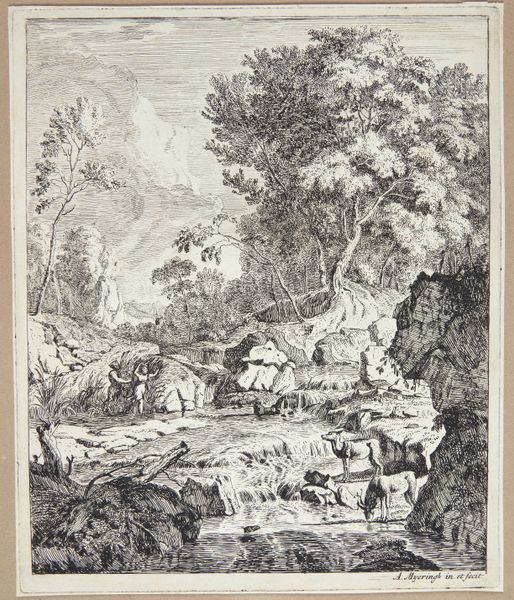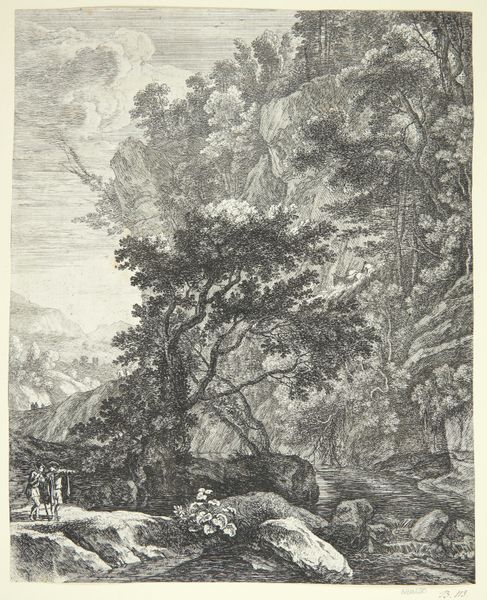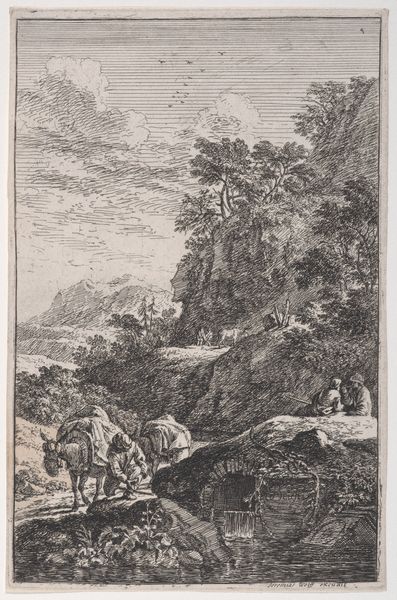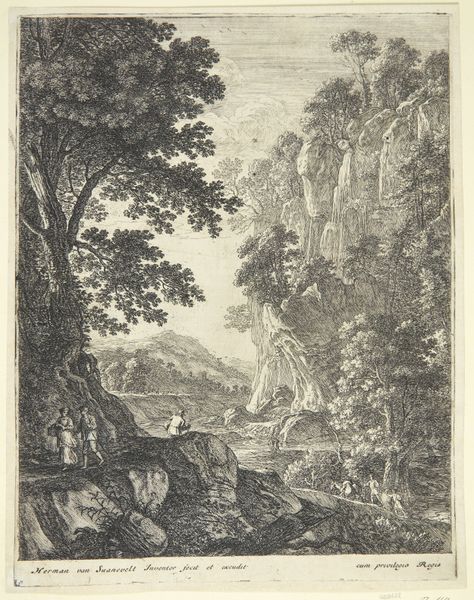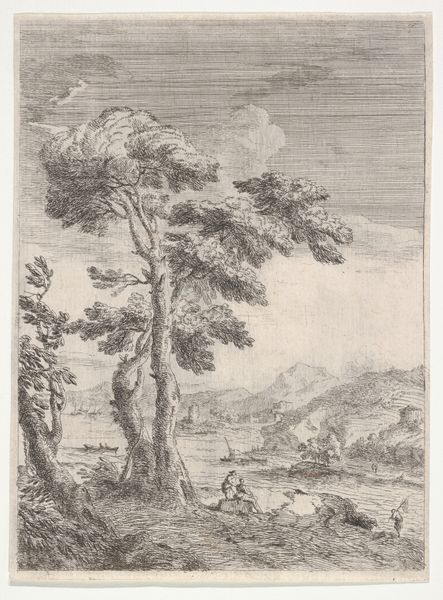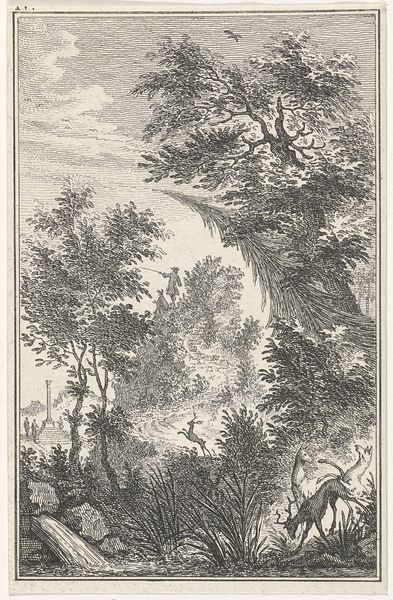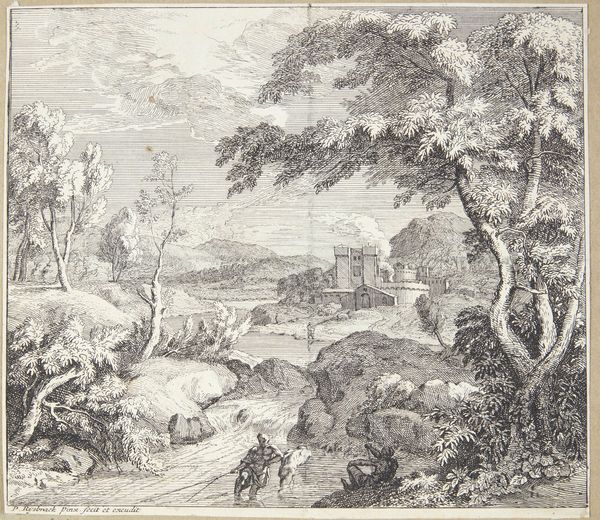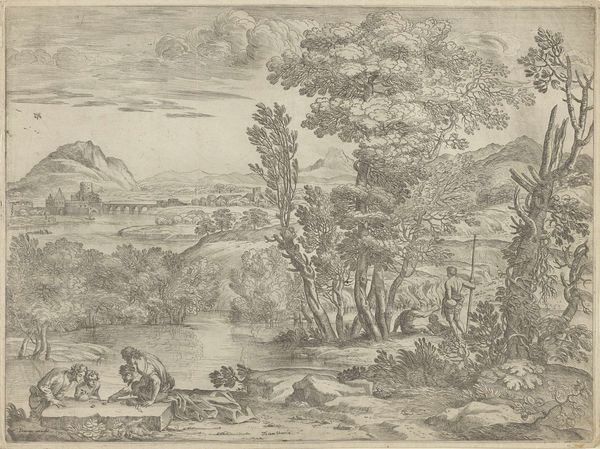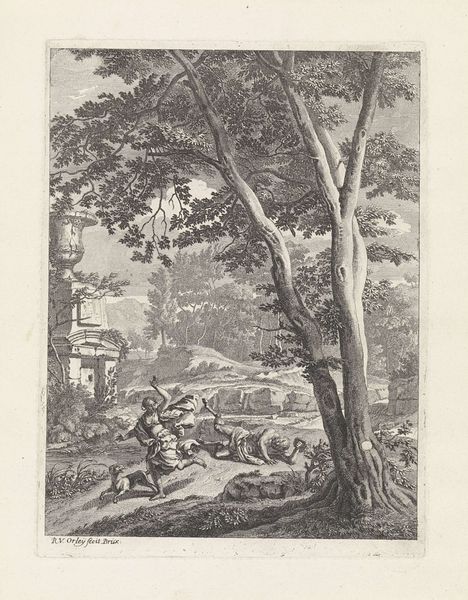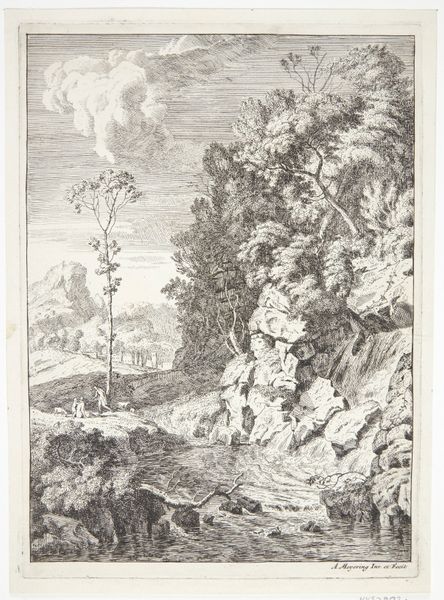
Flodlandskab med et par siddende under et træ, i baggrunden en rytter og en mand, der vander sine heste 1690 - 1730
0:00
0:00
print, etching
#
ink drawing
#
baroque
# print
#
etching
#
landscape
#
figuration
#
cityscape
Dimensions: 359 mm (height) x 286 mm (width) (Plademål)
Curator: Immediately striking is the intricacy, almost obsessive, in this landscape. Editor: Indeed. What you are observing is "Flood Landscape with a Seated Couple under a Tree, in the Background a Horseman and a Man Watering his Horses". It's an etching, dating roughly from 1690 to 1730. Curator: The relationship between the natural and architectural forms dominates my reading. Observe how the lines guide the eye: the winding river draws us in from the intimate scene of the seated figures to the bustling town in the background. Editor: What stands out to me is the process of etching, the way the artist manipulated the metal plate to create these textures. Consider the laborious effort needed to create these precise, repeated lines, hinting at a democratizing artistic spirit that bypasses courtly patronage by embracing wider production. Curator: A provocative point. I see more of a carefully constructed visual hierarchy. Note the pastoral idyll in the foreground contrasts with the implied dynamism of the mounted figures and the city beyond. This creates a deliberate tension. The semiotic interplay invites complex interpretation of nature and civilization. Editor: But where did the copper come from, the acid, the paper? And who printed it? Considering these physical processes challenges the very idea of an autonomous art object, divorced from its material origins and social connections. It reminds us of the world beyond the image, even if it depicts elites hunting through "empty" land. Curator: I concede your point about labor but would add that the composition, considered in isolation, is perfectly balanced and resolved. It functions aesthetically even if ignorant of material realities. Editor: Perhaps. But ignoring the means by which this image came into being feels almost irresponsible. We lose so much valuable context. Curator: Food for thought indeed. It highlights the importance of maintaining nuanced perspectives within any analysis of art. Editor: Precisely! By looking closely at the processes and production of art we also deepen our insight into not only the aesthetic intention, but also the broader material cultures that defined its context.
Comments
No comments
Be the first to comment and join the conversation on the ultimate creative platform.
